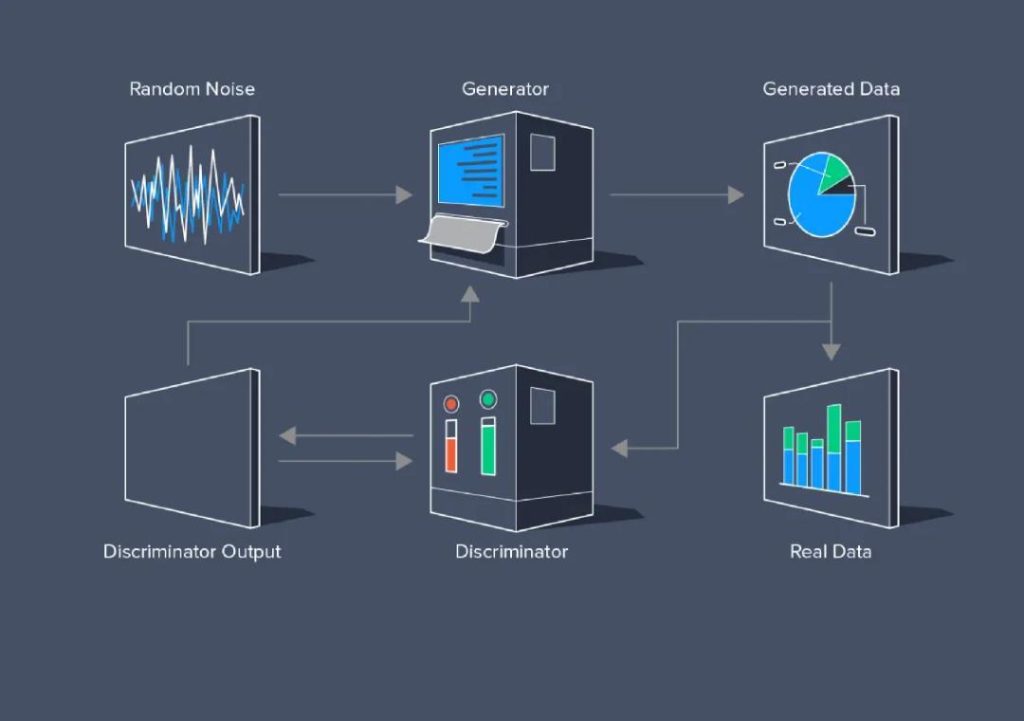
Understanding Generative Adversarial Networks in AI
Generative Adversarial Networks (GANs) are a type of artificial intelligence (AI) model that has been gaining significant attention in recent years. This innovation has the potential to transform various fields such as image generation, drug discovery, and design. In this blog post, we will delve into the world of GANs, exploring what they are, how they work, and their applications.
What are Generative Adversarial Networks?
GANs were first introduced in 2014 by Ian Goodfellow and his team at the University of Montreal. They are a type of deep learning model that consists of two neural networks: a generator and a discriminator. The generator produces synthetic data that resembles real-world data, while the discriminator evaluates the generated data and provides feedback to the generator.
The name “adversarial” comes from the fact that the two networks are in a constant competition. The generator tries to produce data that is indistinguishable from real-world data, while the discriminator tries to identify the generated data and reject it. This adversarial process forces the generator to become more sophisticated and produce more realistic data.
How do Generative Adversarial Networks Work?
The process of training a GAN involves the following steps:
- Data Collection: A large dataset of real-world data is collected, which serves as the target for the generator.
- Generator Network: The generator network is trained to produce synthetic data that resembles the real-world data.
- Discriminator Network: The discriminator network is trained to evaluate the generated data and provide feedback to the generator.
- Adversarial Training: The generator and discriminator networks are trained simultaneously, with the generator trying to produce data that is indistinguishable from real-world data and the discriminator trying to identify the generated data.
- Iteration: The process is repeated multiple times, with the generator and discriminator networks being updated and refined.
Applications of Generative Adversarial Networks
GANs have numerous applications across various fields, including:
- Image Generation: GANs can be used to generate realistic images, such as faces, landscapes, and objects. This technology has the potential to revolutionize fields like photography, film, and advertising.
- Data Augmentation: GANs can be used to generate synthetic data that can be used to augment existing datasets. This can improve the performance of machine learning models and reduce the need for collecting large amounts of data.
- Drug Discovery: GANs can be used to generate synthetic molecules that have specific properties, such as binding to a particular receptor. This technology has the potential to accelerate the process of drug discovery.
- Design: GANs can be used to generate designs, such as furniture, clothes, and architecture. This technology has the potential to revolutionize the field of design and improve the efficiency of the design process.
Challenges and Ethics of Generative Adversarial Networks
While GANs have the potential to transform various fields, they also raise several challenges and ethical concerns, including:
- Ethics: GANs can be used to generate fake data that can be used to manipulate people or organizations. This raises concerns about the ethics of using GANs and the potential for misuse.
- Bias: GANs can perpetuate biases present in the training data, which can lead to unfair or discriminatory outcomes.
- Misuse: GANs can be used to generate fake news, propaganda, or disinformation, which can have serious consequences.
- Explainability: GANs are complex models that can be difficult to explain or interpret, which can make it challenging to understand their decisions and outcomes.
Conclusion
Generative Adversarial Networks are a type of AI model that has the potential to transform various fields. They use two neural networks, a generator and a discriminator, to create realistic synthetic data. While GANs have numerous applications, they also raise several challenges and ethical concerns. As GANs continue to evolve and become more sophisticated, it is essential to address these challenges and ensure that they are used responsibly.
News Source:
https://www.growthjockey.com/blogs/guide-to-generative-adversarial-networks






